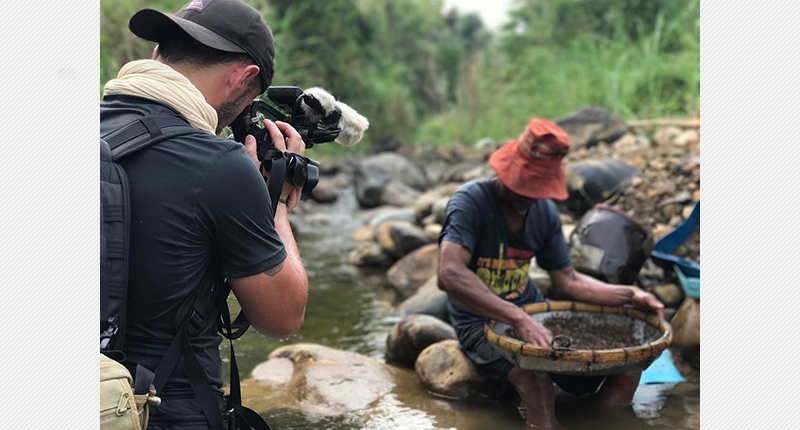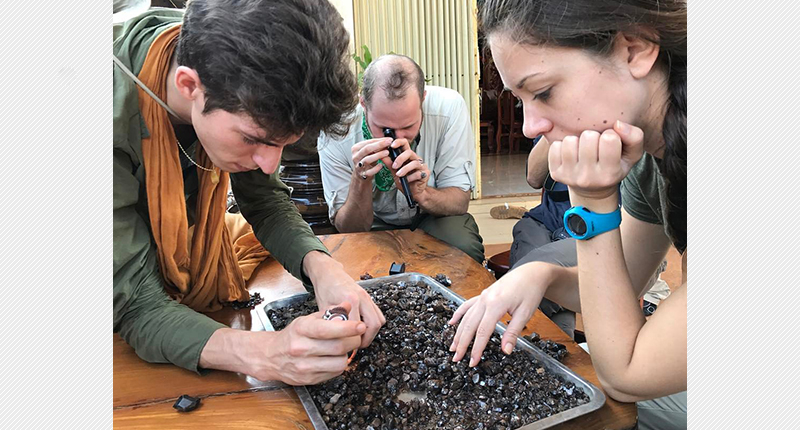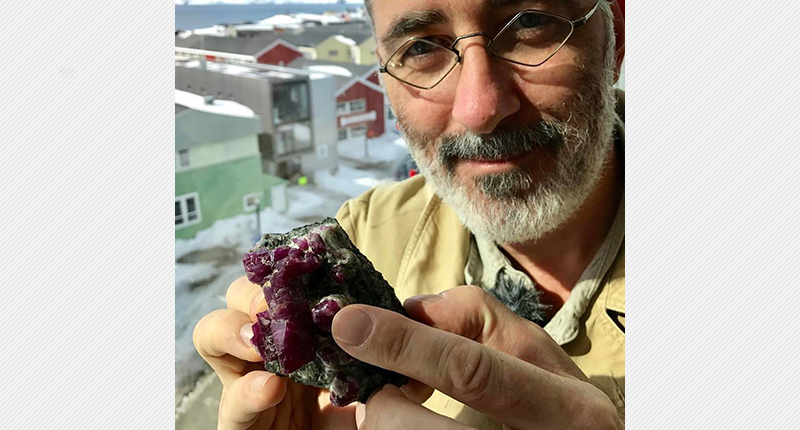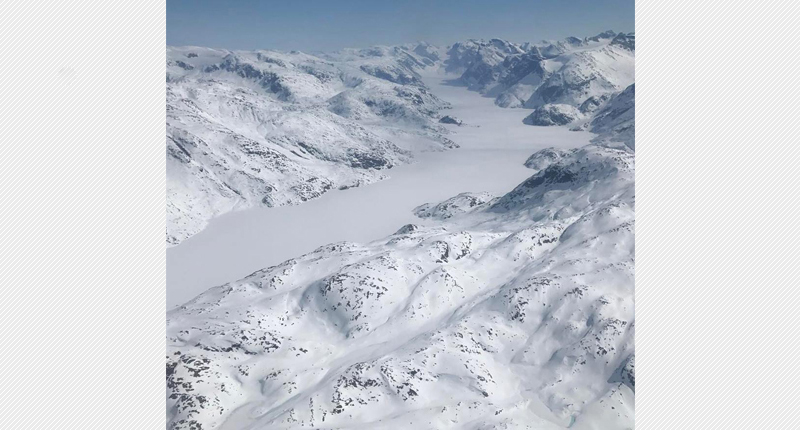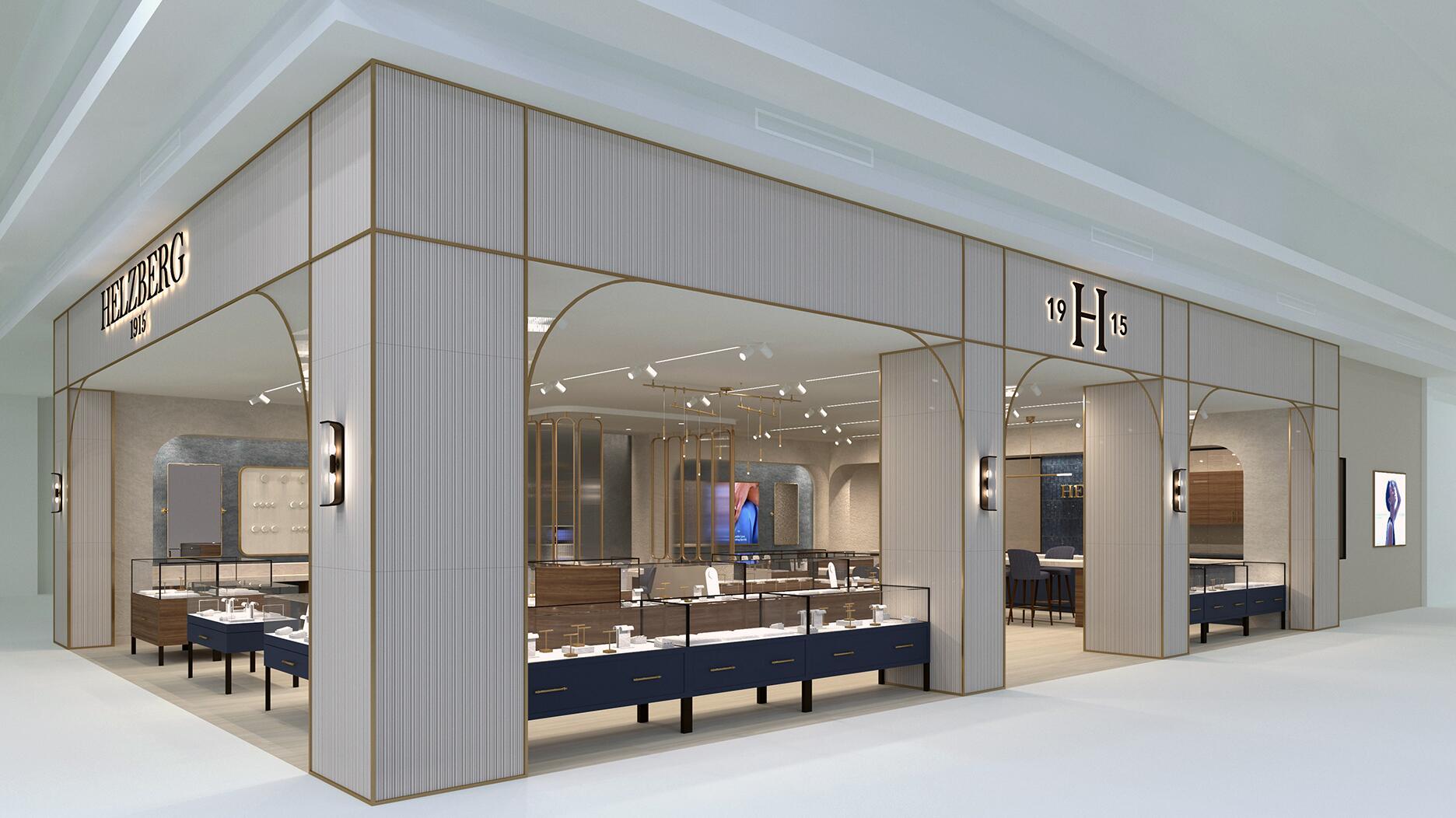The couple pleaded guilty to concealing at least $127 million in cash transactions at its precious metals businesses.
What It’s Like to Be a Field Gemologist, Part 1
Vincent Pardieu talks broken bones, illness and other realities of being in the field in part one of a two-part Q&A.

The supply side of the colored gemstone market is both its biggest challenge, with its ever-changing and broad nature, and, to me, its most fascinating. All it takes is one new source to pop up, or one to run dry, and the whole game changes.
Vincent Pardieu has made a career out of traveling the world to visit gemstone mines and attain material straight from the source.
He was born in France and went to school for business. While he was studying, he served as a tour guide. Eventually, a trip to Myanmar helped him discover that gemstones represented everything he liked—science, traveling, trade, history and geography—and he studied gemology.
After discovering that the selling side of the business wasn’t for him, Pardieu began working with labs and research, eventually finding a niche visiting the field and obtaining specimens for the Gemological Institute of America and now for the new Danat lab in Bahrain.
Fascinated by the travel and research he does, I reached out to Vincent to see if he would chat with me about what it means to be a field gemologist and share some of his most memorable moments in the field. Luckily, he granted me a (rare) interview and look into his world.
In part one of a two-part Q&A, Vincent and I talk about how he got into field gemology, what exactly a field gemologist does and the challenges he faces on the job.
This interview has been edited for length and clarity.
National Jeweler: Can you tell me about the path that led you to field gemology?
Vincent Pardieu: In October 2004, I became the director of the lab at the Asian Institute of Gemological Sciences (AIGS). During the Asian financial crisis in 1998, the AIGS had the problem of many people thinking it was closed. The lab went through some very difficult times from 1998 to 2004, and my job was to get it back on track, to make sure that people knew that it was active.
My strategy was to do research and then to publish research. We made a 25-page study about lead glass-filled rubies that I put on the AIGS website and sent that to about 2,000 emails around the world. Within one week, everybody knew that the AIGS was not closed.
Customers began asking about origin determination, and I thought that it was the right direction to go. But the reference
A lot of new deposits had started since 1998, so I decided to build a program to visit all of these new deposits in Asia, Africa and central Asia to put the reference collection to the right level and then be able to start again doing origin determination. I decided to collect myself because I learned that the best way to do research was to do like geologists will do—collecting samples directly in the field at the mine.
In 2005 and 2006, I started traveling two times for three months. The first year we went to Vietnam, Sri Lanka, Madagascar, Kenya, Tanzania. The second year I went to Pakistan, Afghanistan, Tajikistan and China to visit all the ruby, sapphire, emerald mines in the area, bring them back to the lab and start research.
Then I left AIGS and I found a job at the Gübelin Gem Lab as a gemologist, working on origin determination of gemstones for about two years before moving to the GIA.
Kenneth Scarratt, who was the director of GIA in Thailand, asked me to join the GIA to start a field gemology department and build a reference collection. At this point, I was the only one doing that, and I was doing that as a hobby. I had my website, FieldGemology.org, and I was putting a report of all my trips there, and then they contacted me and asked me to turn my hobby into my main job.
I joined the GIA in December 2008, and from then to January 2017, I was a field gemologist for the GIA laboratory, building a reference collection for them to be able to provide better and more reliable service about origin determination.
After I left the GIA, I built my own consultancy company. I’m now working with a laboratory in Bahrain, where my former boss at GIA is currently the boss, Ken Scarratt, who retired from the GIA about two years ago. He’s now the CEO of Danat, and he asked me to do exactly what he asked me to do for GIA eight years ago—to come here to help him build a reference collection and visit all the ruby, sapphire and emerald deposits in the next three to four years to build it.
Over the next few years, I will be collecting reference samples around the world for this laboratory, Danat, which is a kind of state-owned laboratory.
NJ: What exactly does it mean to be a field gemologist? What does your role entail?
VP: Mainly I am working for gemological laboratories, and the objective is to be able to get some samples that are reliable to build a reference collection. To do that, the best way is to send somebody trustworthy to the field to go to the mine and to collect samples if possible, as close as possible to getting it directly from the mine.
It means that you have to travel to the place where the stones are mined, witness the mining, get the samples and bring them back safely. And document the whole process, because it’s not just about bringing the sample back. You have to provide proof that the actually samples are really from there.
NJ: Which would be, for example, photos from the mining site?
VP: Photos aren’t enough usually. I usually travel with people, and I ask them to document what I’m doing, like somebody holding the camera. But there are two good ways to do it: You can travel with a lawyer, or you can travel with a camera man. And the camera man will make a video of you and the mine. It’s better than a photograph.
I usually travel with a camera man who documents the whole expedition. Then after that, I can provide to the labs that I work with sometimes 70 or 80 hours of images from the trip because they want to see everything that happened. And then we can make some short video, like four or five minutes, from that to market and promote what the lab is doing.
NJ: When you’re out in the field doing your research, what are some of the biggest challenges you face?
VP: The people. If you travel with the wrong people, you are in deep trouble. My advice: When you go to the field, travel with people that you know.
NJ: Are you referring to the team you take along with you or the miners and gemstone dealers on the ground?
VP: Both. If you take in your team somebody who is a troublemaker, then you might get into serious trouble.
“If you travel with the wrong people, you are in deep trouble. My advice: When you go to the field, travel with people that you know.”The team composition, you are responsible for that, so you have to make sure that everybody on the team is here to help you and not undermine you. If you have a complainer on the team that is starting to play games and starting to say, ‘Well I don’t want to go there,’ it’s a headache because then you won’t be able to focus on the mission. You’ll have to focus on the problem in your team. So you want to have the team to help you, not to distract you from the focus.
Then the issue is, most of the time, when you go to a place, you don’t know the place. It’s for research. I go to places usually that I don’t know. So you have to find a contact, the right contact, to go there. If you connect yourself with the right person, a person that is well-respected and has good contacts there, it won’t be easy, but it will help. But if you go with the wrong person, you are going to have a headache.
NJ: How do you find those people, especially on the ground in a country you’ve never been to before?
VP: Well, I’m a member, for example, of the International Colored Gemstone Association, and ICA has members from many countries. I know some people through my ICA network and usually I’m using my ICA network or they know some guys who can help me in those countries.
Usually I find one person who can tell me about the regulations and the laws in the country, if a foreigner can visit the mines and so on. If I find that a foreigner cannot visit the mines, who is the person I have to ask to get the special authorization to be able to visit the mines? How do I buy samples? How do I export the samples? You have to find the right contact. As long as you don’t have the right contact, don’t go to the country.
NJ: In terms of the team that you’re working with, do you feel like you’ve reached a place where you know enough to have good people around you regularly?
VP: Yes, but sometimes I make mistakes. Sometimes I travel with people that, when we are in trouble, don’t handle it the best.
I broke an arm. I caught malaria twice. I got Lyme disease, and food poisoning many times. Twice I had a gun put on my face in Africa. I was detained twice: one time in Mozambique, one time in Afghanistan. In Afghanistan, they thought I was a spy so they had me for three days traveling from police station to police station because they caught me in the middle of nowhere dressed like an Afghan but my passport was French.
And then in Mozambique, I was trying to go to a new ruby deposit but it was in a protected area. I had no idea, because that was a new place. I was on a motorbike, and we were driving and then we were caught by a group of rangers who were protecting the access to the illegal ruby mining site. They detained us for three days in the field because they were thinking that we were maybe the guys financing the illegal mining. But after three days they found out that we weren’t, so we were freed.
Then I was able to contact the management of the reserve, meet them, and return to this ruby deposit.
It went very well, and they invited me to give a talk at the Congress of the Reserve in Niassa in northern Mozambique in November. I was able to connect to many other people and visit the second ruby deposit in Montepuez that I was trying to visit for the past five months but could not because the people in charge of that area were not trusting anybody.
But this is the irony of that: If I was not detained and arrested, if I did not have a gun put on my face that day in Niassa Reserve, I would not have probably been the foreigner to see the ruby deposit in Montepuez. I was able to visit this deposit, collect the stones, make the study and because of that study, Gemfields came into Mozambique and invested and bought the deposit. And now it’s the world’s biggest ruby mine. And I’m following this deposit since 2009.
That day, when a gun was put on my face, I was with three young guys. I was so happy that I was with these guys because we had the guns put to our face by a Mozambican policeman.
We agreed that I was the guy doing the talking, and they were really calm. No complaints. And we all had the same story. We told them the truth, saying what we were doing exactly, and everything was clear. They were quiet. The policeman, the immigration, they were not able to divide us. So we kept calm and a united front in front of them. And then at the end of three days, we were free and everything went well.
But they didn’t provide us food, no water for the first few hours, we had to sleep on the floor, with a hyena eating a dead buffalo about 250 meters (about 820 feet) away from there.
That’s the reality of the field when you go there. You have to expect the unexpected. You have no idea what will come but you can be sure about one thing: There will be some challenges all the time.
The Latest

Consumers shared concerns about prices, inflation, tariffs, trade, and politics in the survey’s write-in response section.

In February 2026, the auction house will move its headquarters to the former Steinway Hall, a neoclassical landmark on Billionaires’ Row.

How Jewelers of America’s 20 Under 40 are leading to ensure a brighter future for the jewelry industry.

The new show will take place Jan. 23-25, 2026.


The former BHP Billiton leader and Gemfields chairman is remembered for his influential leadership throughout his 50-year mining career.

The LVMH-owned brand has partnered with the costume design union to revamp its award for 2026.

Roseco’s 704-page catalog showcases new lab-grown diamonds, findings, tools & more—available in print or interactive digital editions.

The luxury titan inked a deal to acquire an initial minority stake in the jewelry manufacturer with a pathway to full ownership by 2032.

The company’s curation of unsigned vintage and estate jewelry debuted at the Bloomingdale’s in Costa Mesa, California.

In the recent multi-shipment seizure, CBP also found counterfeit Audemars Piguet, Moncler, and Chrome Hearts items.

Jewelers of America execs and National Jeweler editors discuss tariffs, the sky-high gold price, and the engagement that broke the internet.

The luxury goods company said founder Ippolita Rostagno will remain at the brand’s helm.

Laura Burdese, who joined the Italian luxury brand in 2022, will take on the role in July.

Need a gift for the cat lover who has everything? Look no further than our latest Piece of the Week.

It purchased the “Grosse Pièce,” an ultra-complicated Audemars Piguet pocket watch from the ‘20s, for a record-breaking price at Sotheby’s.

The lab-grown diamond grower now offers custom engagement and fashion jewelry through its Kira Custom Lab Jewelry service.

Chandler got his start at Michelson Jewelers and has served as DCA president and CEO since 2001. He will retire at the end of the month.

The boutique is slated to open this week inside Terminal 8, offering pre-owned Rolex watches and more to international travelers.

Sponsored by Digital Monitoring Products

The special-edition egg pendant ingested in a New Zealand jewelry store was recovered after a six-day wait.

Associate Editor Natalie Francisco plays favorites with Piece of the Week, selecting a standout piece of jewelry from each month of 2025.

The “Love and Desire” campaign is inspired by the magic that follows when one’s heart leads the way, said the brand.

Two awardees will receive free tuition for an educational course at the Swiss lab, with flights and lodging included.

Berta de Pablos-Barbier will replace Alexander Lacik at the start of January, two months earlier than expected.

Sotheby’s held its first two jewelry sales at the Breuer building last week, and they totaled nearly $44 million.

Winners will receive free registration and lodging for its fourth annual event in Detroit.













